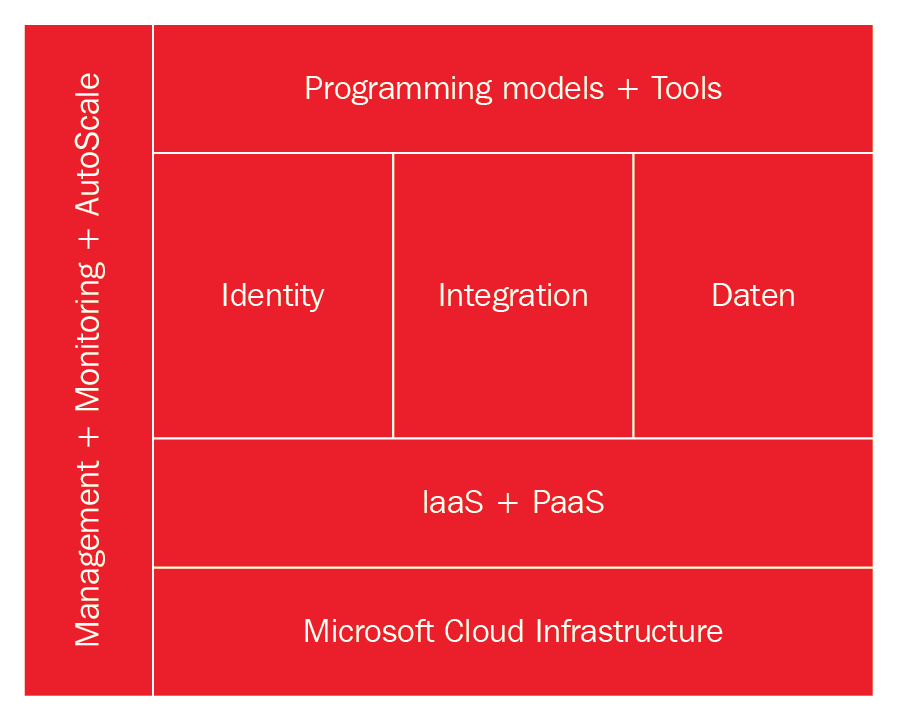Azure offers many services in its cloud computing platform. These services include the following:

The service categories, differentiated between platform services and infrastructure services.
The platform services are as follows:
- Management: These services include the management portal, the marketplace with the services gallery, and the components to automate things in Azure.
- Compute services: Compute services are Azure cloud services that are basically PaaS offerings for developers to quickly build and deploy highly scalable applications. The service fabric and Azure RemoteApp are also in this category.
- Security: This contains all of the services that provide identity in Azure, such as Azure AD, multi-factor authentication, and the key vault, which is a safe place for your certificates.
- Integration: The integration services include interface services such as BizTalk and Azure Service Bus, but also message helpers such as storage queues.
- Media and CDN: These are basically two services. One is the CDN, which makes it possible to build your own content delivery network based on Azure. The other is media services that make it very easy to use and process different media with the help of Azure.
- Web and mobile: These include all of the services that assist in creating apps or backend services for the web and mobiles, for example, web apps and API apps.
- Developer services: These are cloud-based development tools for version control, collaboration, and other development-related tasks. The Azure SDK is a part of the developer services.
- Data: The data services contain all of the different database types that you can deploy in Azure (SQL, DocumentDB, MongoDB, Table storage, and so on) and diverse tools to configure them.
- Analytics and IoT: As the name suggests, analytics services are tools to analyze and process data. This offers a broad range of possibilities, from machine learning to stream analytics. These can, but don't have to, build on certain data services. The Internet of Things (IoT) services include the fundamental tools needed to work with devices used for the IoT, such as the Raspberry Pi 2.
- Hybrid operations: This category sums up all of the remaining services that could not clearly be categorized. These include backup, monitoring, and disaster recovery, as well as many others.
The infrastructure services are as follows:
- Operating system and server compute: This category consists of compute containers. It includes virtual machine containers and, additionally, container services, which are quite new to the product range.
- Storage: Storage services are the two main storage types—BLOB and file storage. They have different pricing tiers depending on the speed and latency of the storage ordered. Storage is looked at in detail in Chapter 6, Implementing Azure Storage.
- Networking: This category consists of basic networking resources. Examples are load balancer, ExpressRoute, and VPN gateways.
The important thing is to remember that we are talking about a rapidly changing and very agile cloud computing platform. After this chapter, if you have not already done so, you should start using Azure by experimenting, exploring, and implementing your solutions while reading the correlating chapters.
For testing purposes, you should use the Azure Free Trial (https://azure.microsoft.com/en-in/offers/ms-azr-0044p/), Visual Studio Dev Essentials (https://www.visualstudio.com/dev-essentials/), or the included Azure amount from an MSDN subscription.



